- 1. Death Valley - Things to Know Before Visiting
- 1.1. How to Get There
- 1.2. How Many Days to Spend There
- 1.3. Best Times to Visit
- 2. KÜHL’s Top Picks of Death Valley Attractions
- 2.1. The Famous Clown Motel, Tonopah
- 2.2. The International Car Forest
- 2.3. Rhyolite - Ghost Town
- 2.4. Death Valley Superbloom
- 2.5. Scotty's Castle
- 2.6. Racetrack Playa
- 2.7. Ubehebe Crater
- 2.8. Death Valley Mud Cracks
- 2.9. Charcoal Kilns
- 2.10. Twenty-Mule Team Canyon
- 2.11. Dante's View
- 2.12. Zabriskie Point
- 2.13. Badwater Basin
- 2.14. Natural Bridge
- 2.15. Devil's Golf Course
- 2.16. Artist's Palette
- 2.17. Darwin Falls
- 2.18. Mosaic Canyon
- 2.19. Mustard Canyon
- 2.20. Golden Canyon
- 2.21. Marble Canyon
- 2.22. Mesquite Flat Sand Dunes
- 2.23. Eureka Dunes
- 2.24. Telescope Peak
- 2.25. Furnace Creek
- 2.26. Salt Creek Interpretive Trail
- 2.27. Surprise Canyon Hike
- 3. Tips for Visiting Death Valley
- 4. What to Wear When Visiting Death Valley
- 5. Final Thoughts
- 6. FAQs
- 6.1. What is the best point in Death Valley?
- 6.2. When should you avoid Death Valley?
- 6.3. Why is Death Valley so expensive?
- 6.4. Are there animals in Death Valley?
- 6.5. Why is it called Death Valley?
- 6.6. Is the water drinkable in Death Valley?
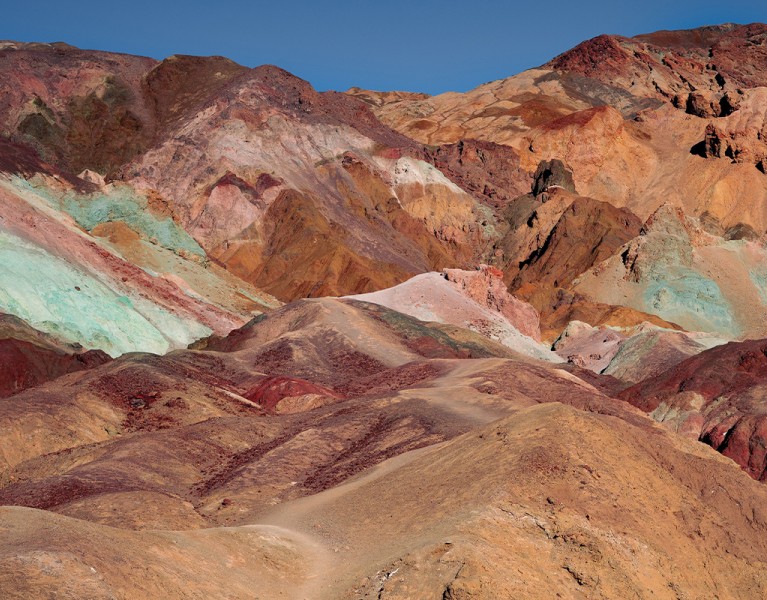
Best Things to Do in Death Valley - KÜHL’s Top Picks
Table of Contents [Show]
Death Valley National Park is big. It covers a jaw-dropping 5,270 square miles, making it almost as big as the state of Connecticut.
We mean to say that a lot of the things to do in Death Valley are really spread out. You’ll be clever to plan if you want to experience the best of this park within a limited time. That’s where we come in.
Below, we’ve highlighted the top 27 Death Valley things to do, their location, and the perfect time to visit them. And because there are some concerns and risks to beware of, we’ve also included crucial tips you should know when planning a trip to Death Valley attractions.
Death Valley - Things to Know Before Visiting
How to Get There
Death Valley is located in south-central California on its eastern border with Nevada. There are different ways of approaching it, depending on where you are coming from:
- From Los Angeles, it’s roughly 266 miles or a drive time of about 5 hours.
- From Las Vegas, the distance ranges from 111 to 142 miles, depending on your route. The drive time should be about 2 hours.
- From Nevada and the east, follow Highway 95 to Highway 373, Highway 374, or Highway 267, all of which will take you to Death Valley National Park.
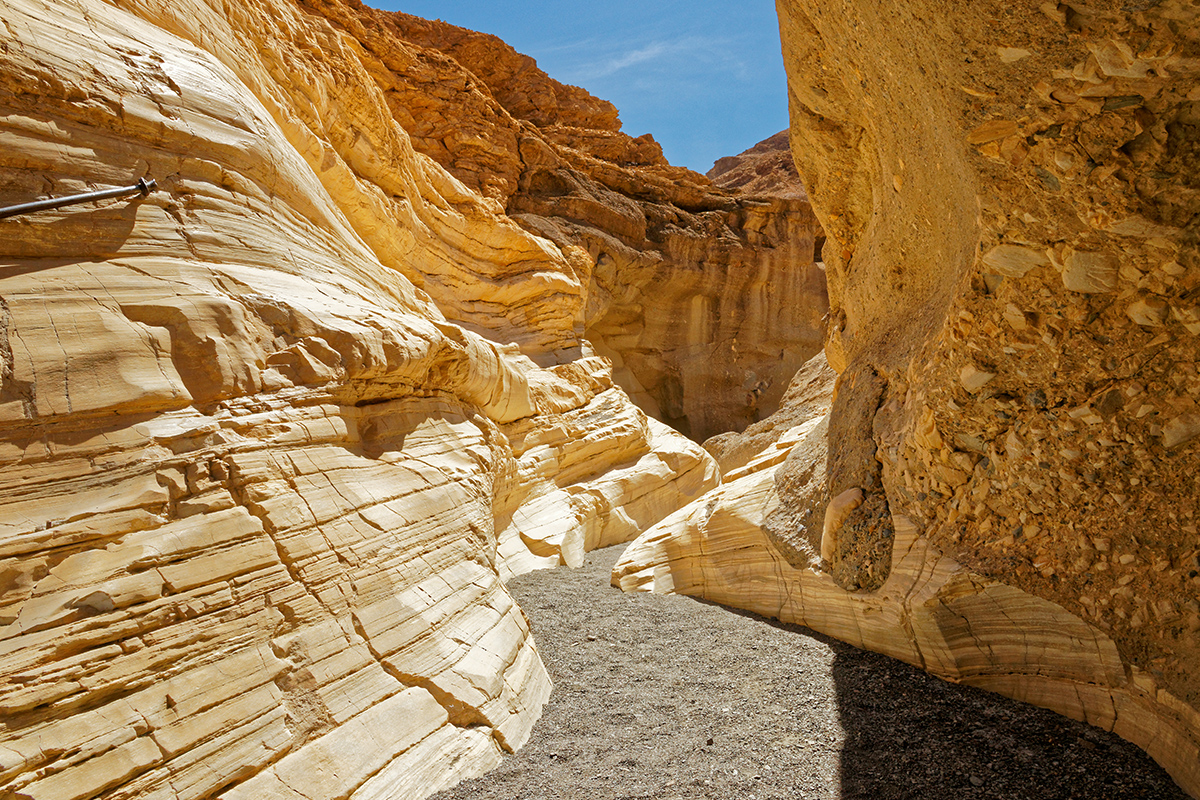
How Many Days to Spend There
How long you should stay in Death Valley will depend on how much exploration you want to do. It’s possible to hit some of the best things to do in Death Valley, California, in one day. However, 2-3 days is enough time to explore its hidden gems without rushing.
Best Times to Visit
The spring months of March and April are the best time to visit Death Valley National Park if you don’t mind the crowds. Otherwise, plan your Death Valley National Park trip between the winter months of December through February if you want to beat the crowds of spring and summer heat.
KÜHL’s Top Picks of Death Valley Attractions
The Famous Clown Motel, Tonopah
Nevada is home to some of the creepiest spots in the continental US- none more so than The Famous Clown Motel in Tonopah. Among all the top things to see in Death Valley, this Wild Wild West motel, crowned America’s Scariest Hotel, should never be missed.
The Famous Clown Motel is located along north Main Street in the dusty desert town of Tonopah. Most Death Valley visitors must stop here, even if they don’t plan to stay. But spending at least one night, particularly in rooms 108, 111, 210, or 214, would be a real test of bravery.
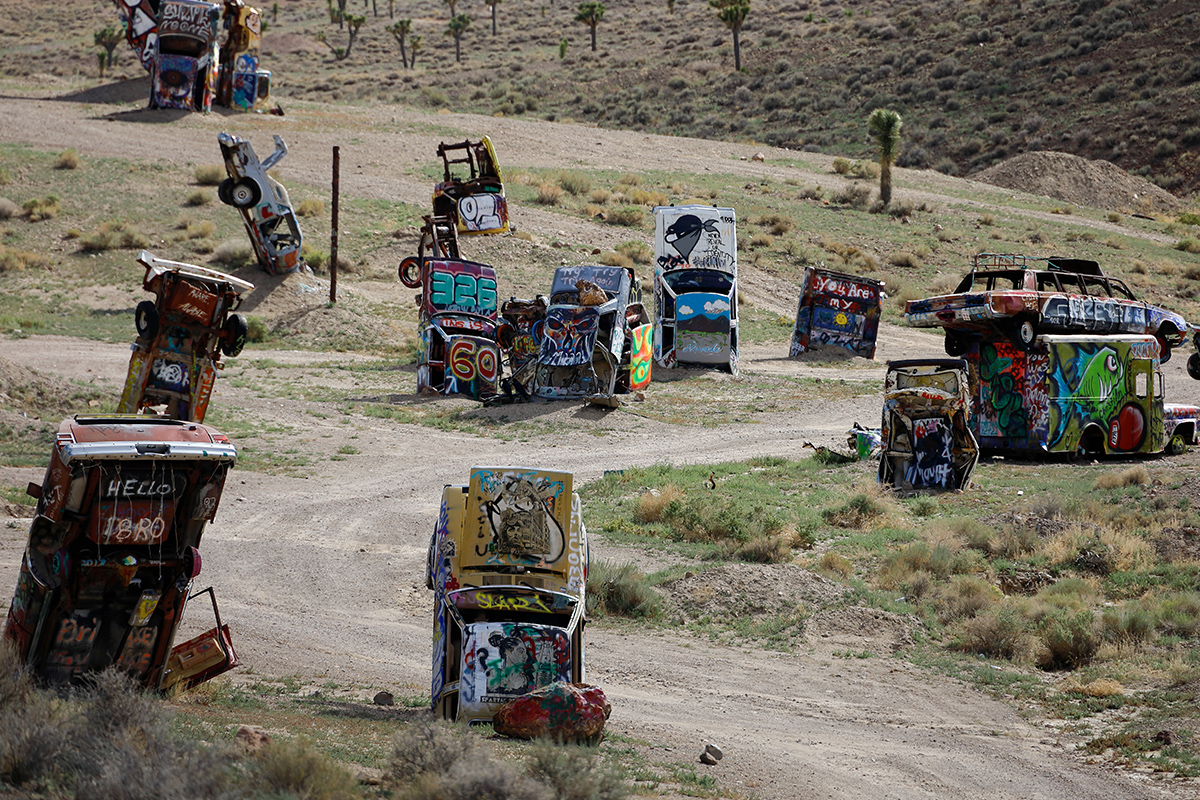
The International Car Forest
This forest of junk cars is one of those things that only a few get to experience. Seriously, it’s not every day that we see over 40 vehicles, including a couple of buses, stuck nose down into the ground. While it’s pretty remote, a quick detour to this point on your way to The Clown Motel is definitely worth your time.
The International Car Forest of the Last Church is located in Goldfield off Highway 95, approximately 2.5 hours from Las Vegas. The International Car Forest is pretty accessible throughout the year. But keep in mind that the dirt road to this must-see Death Valley attraction tends to get rough and may require a four-wheel drive.
Rhyolite - Ghost Town
Built in 1907, the former mining town of Rhyolite was meant to be the next Virginia City. But it crumbled just as quickly as it had risen after its richest gold ore was exhausted. Another Death Valley must-see site today, Rhyolite, has become popular again because of its rich history, ruins, art, and buildings, some of which are still intact.
You’ll find Rhyolite around four miles west of Beatty, Nevada, off Highway 374. An hour or two is enough time to see most of Rhyolite town’s attractions.
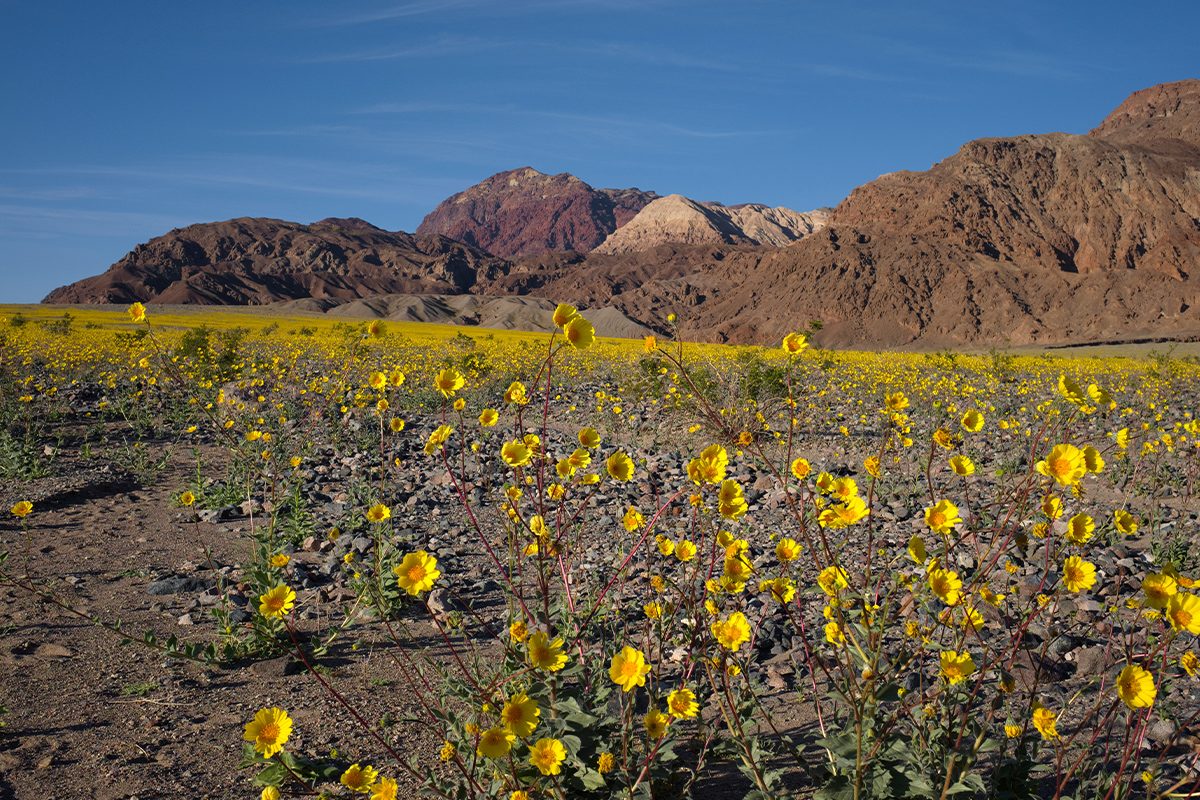
Death Valley Superbloom
When people start questioning the existence of life in Death Valley, she summons a surreal floral display of wildflowers- a phenomenon aptly dubbed a Superbloom.
It’s difficult to predict the wildflower season in Death Valley, but it typically occurs once every 10-15 years. When it takes place the best time to see the Death Valley Superbloom is in April, when the flowers are in full bloom.
Scotty's Castle
If you are a fan of California's history, architecture, and great outdoors, Scotty's Dale will likely be the highlight of your activities in Death Valley. Part of its charm is the idea of a lavish Spanish-style castle in the bleak desert of Death Valley. But the history of the Johnsons and Scotty, the geology, and the surrounding magical scenery continue to draw thousands of visitors to this two-story jewel.
Scotty's Castle is nestled in the oasis of Grapevine Canyon, about 45 miles north of Stovepipe Wells via CA State Route 190. The time needed to experience Scotty's Castle is 2-3 hours.
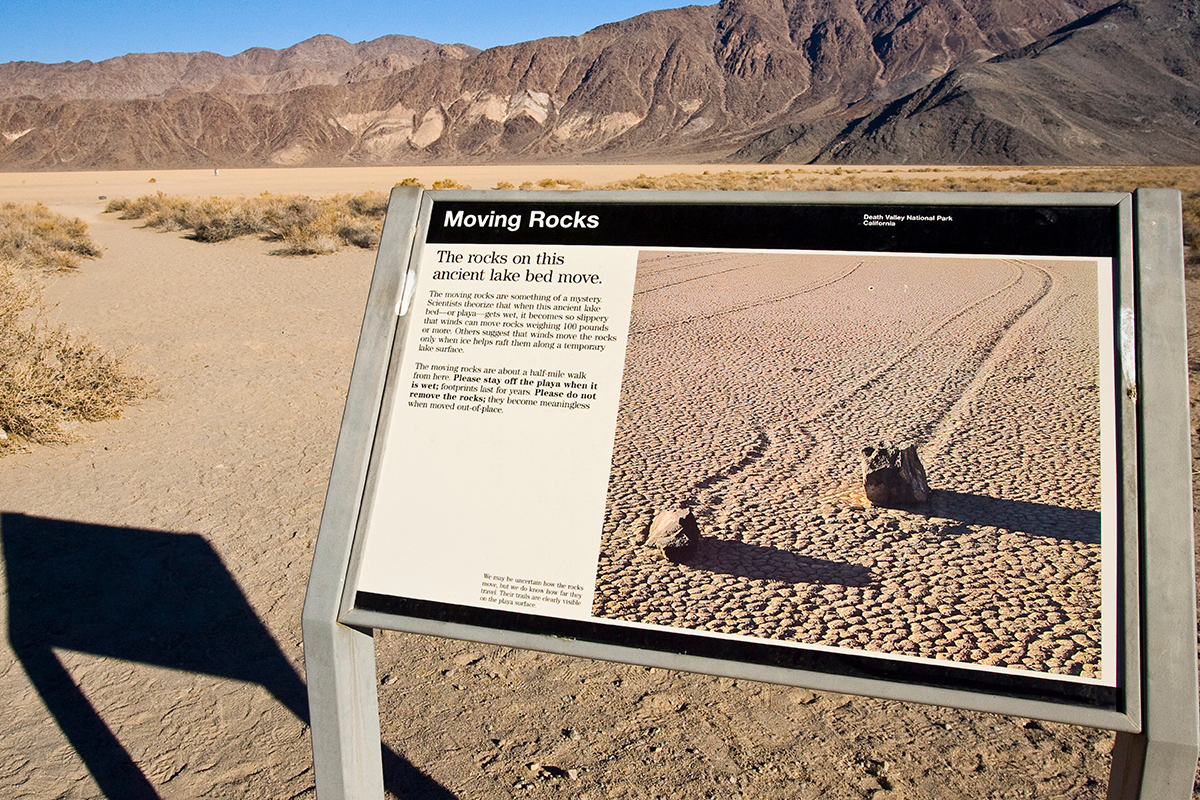
Racetrack Playa
It's almost impossible to see the stones of Racetrack Playa moving in person. But the trails they leave behind and their sheer size make this one of the best places to visit in Death Valley.
Racetrack Playa is located an 83-mile drive from the Furnace Valley Visitor Centre. From Ubehebe Crater, it's a 26-mile or roughly a 2-hour drive to this point.
Ubehebe Crater
How do you like hiking down a deep volcanic crater in the hottest place on earth? If that sounds like a good way to challenge yourself, visiting Ubehebe Crater should top your list of top things to do at Death Valley National Park. You can also walk around the rim for a bird's eye view of this 500-777-foot-deep crater. This option allows you to explore other smaller craters around, including the famous Little Hebe.
Ubehebe Crater is located roughly 56 miles from the Furnace Creek Visitor Centre. The drive time from Furnace Creek is approximately 1 hour 15 minutes.
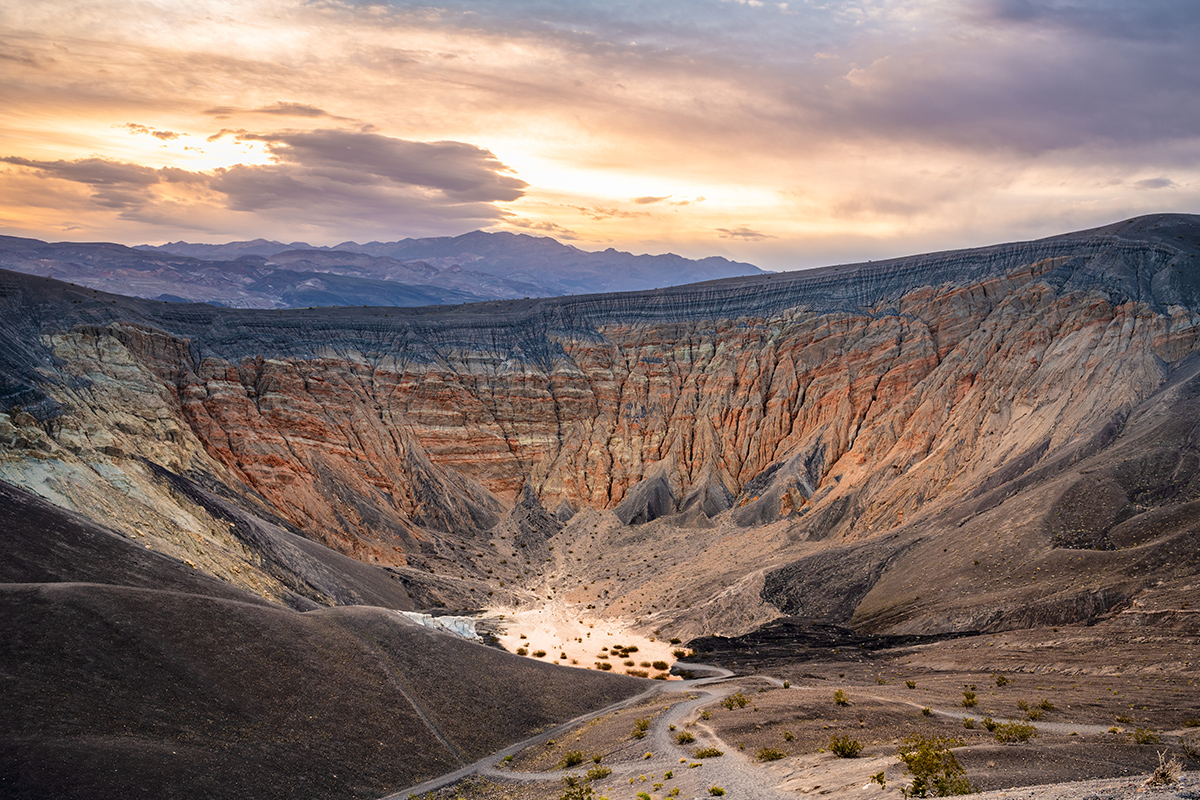
Death Valley Mud Cracks
The Mud Cracks of Death Valley are a popular attraction, particularly to landscape photographers. These cracks occur when rain causes mudflows from the nearby mountains, which are later baked into blocks of all sizes, shapes, and textures by the intense heat of the valley.
Death Valley mud cracks are not always found in the same place, but hunting for them is well worth the time and the drive. That said, keep a sharp eye as you drive around the Furnace Creek and Stovepipe Wells area.
Charcoal Kilns
The Wildrose charcoal kilns are another cool spot to visit during your Death Valley National Park road trip. These ten massive beehive-shaped structures are in remarkably good condition, and you can even smell the woodsmoke smell from over 145 years ago!
These charcoal kilns are located in Wildrose Canyon. From the Furnace Creek visitor center, drive 33.56 miles west on CA 190 to Emigrant Canyon Road, followed by another 28.2 miles on Emigrant Canyon Road.
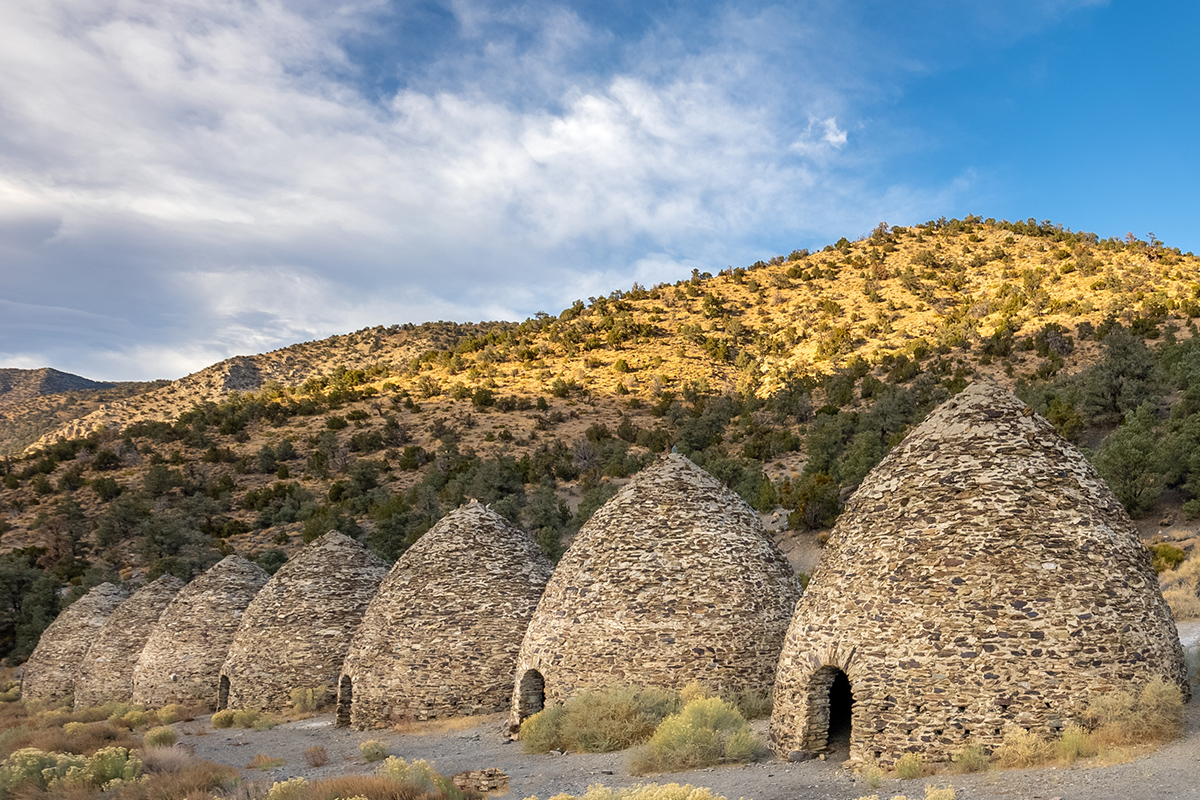
Twenty-Mule Team Canyon
The Twenty-Mule Team Canyon is perhaps the most underrated point in Death Valley National Park. This 3-mile, one-way dirt road offers a scenic and adventurous drive through its stunning, multicolored badlands. If the scenery rings a bell, you've probably seen them in Star Wars Episode VI.
The Twenty-Mule Team canyon is a short detour from Zabriskie Point. The best time to drive through this canyon is in the afternoon or morning when the hills are highlighted, creating awesome views and incredible photo opportunities.
Dante's View
Dante's View is a mountaintop offering premier panoramic views of Badwater Basin approximately 5500 feet below. From this overlook, people moving across the salt flats look like ants, giving you a clearer perspective of its vastness. In the distance, you can also see the Panamint Range, Black Mountains, and Owlshead Mountains.
Dante's View is one of the best places to see in Death Valley National Park, especially if you don't have much time. It's located about 25 miles from the Furnace Creek visitor center. The drive time from Las Vegas to Dante's View is around 1 hour 45 minutes.
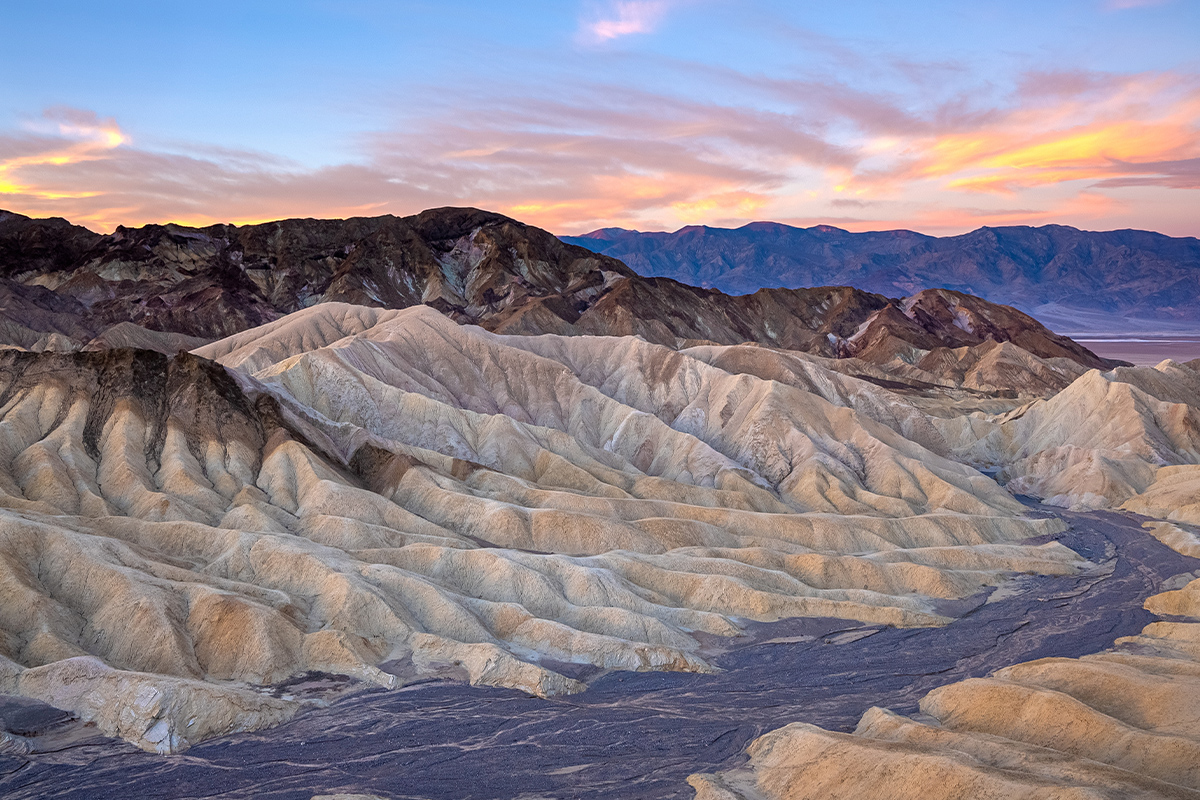
Zabriskie Point
Unlike the Wildrose Charcoal Kilns and the Twenty-Mule Team Canyon, Zabriskie Point is not a secret spot. This is one of the most popular Death Valley to do things because it offers the best views of the surrounding colorful badlands. Plus, Zabriskie Point is easy to access, given that it's roughly four miles from the Furnace Creek Visitor Center. The walk from the parking lot to the viewpoint is easy and stroller-friendly.
The best time to visit Zabriskie Point is in the morning or closer to sunset because the contrasting colors of the ridges are stunning.
Badwater Basin
Of all the things that you must see in Death Valley National Park, Badwater Basin should top your list. A visit to this salty wonderland puts you at the lowest point in North America at 282 feet below sea level, and its salt polygons will be the most recognizable on your IG, Facebook, and TikTok feeds.
Badwater Basin is located 17 miles from Furnace Creek on Badwater Road past Artist's Drive. The parking lot is on the west side of the road. While any time is good to visit Badwater Basin, it's best to wait for spring or winter when it's a bit cooler.
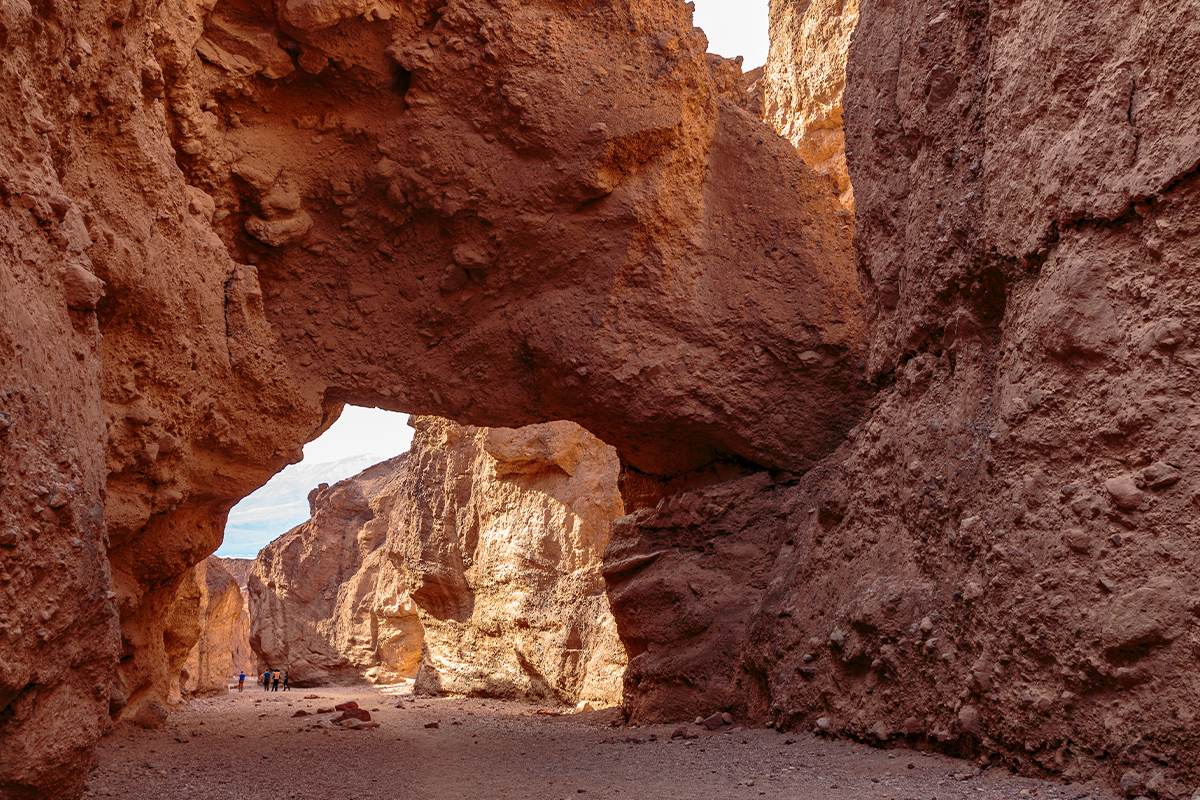
Natural Bridge
Natural Bridge Canyon is another awesome treat for geology lovers and those interested in learning the history of Death Valley National Park. The natural bridge, formed by rushing floods pounding a hole through a rock, is about 0.3 miles from the car park area. Besides Natural Bridge, this canyon packs other interesting features, including vertical chutes, dry waterfalls, and hanging canyons.
Death Valley's Natural Bridge is located about 16 miles south of Furnace Creek visitor center. The car park area is accessed via a dirt road roughly 13.5 miles south of Highway 190 off Badwater Road.
Devil's Golf Course
About 4000 years ago, this was a lake with a depth of around 30 feet. With time, the lake dried up, leaving behind gigantic salt rocks. Years of being worked on by rain and wind changed these salt crystals into a flat bed of jagged spires that "only the devil could play golf" on.
While you won't be able to play golf on this course, this is one of Death Valley’s must-see spots. To get to the Devil's Golf Course from Furnace Creek, drive 11 miles south on Badwater Road. From the main road, the Devil's Golf Course is a mile or so on a dirt road. Go around sunset if you want to snap the coolest shots of this forbidden land.
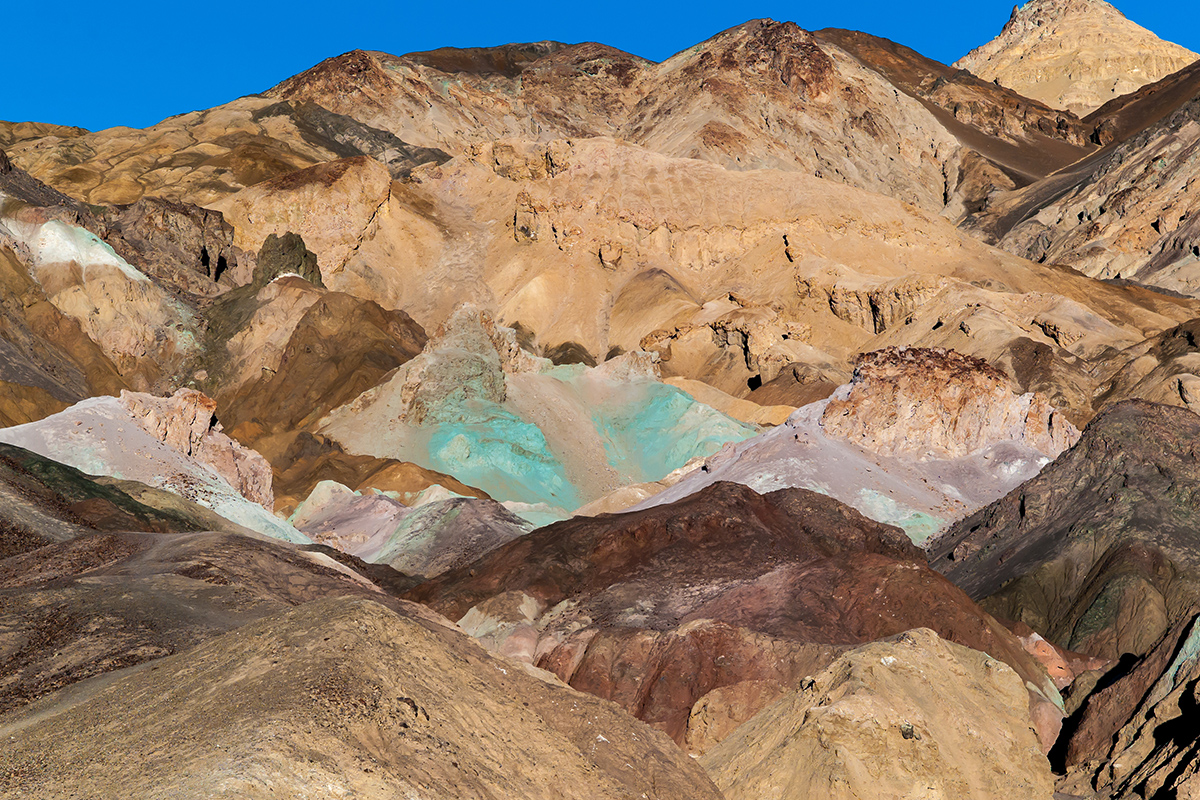
Artist's Palette
Artist's Palette is one of those must-see Death Valley attractions that you must visit to believe. This is a breathtaking display of red, green, pink, purple, yellow, and orange colors caused by the oxidation of the minerals in these rock formations.
Artist's Palette is nestled on the west side of the Black Mountains. The entrance point to the 9-mile Artists Drive Scenic Loop, which leads to this attraction, is roughly 10 miles south of Furnace Creek along Badwater Road.
Darwin Falls
It's ridiculous to imagine that there would be a year-round waterfall in Death Valley National Park, with its record-breaking heat and dry climate. But there's a handful of them, and Darwin Falls is the most sought-after. With its shrubbery setting and plentiful shade, Darwin Falls makes for a memorable picnic hike, so bring some hiking food.
Darwin waterfall in Death Valley National Park is roughly a one hour and 20 minutes drive west of Furnace Creek along Highway 190. The best time to visit Darwin Falls in Death Valley National Park is early morning or afternoon when it's not scalding hot.
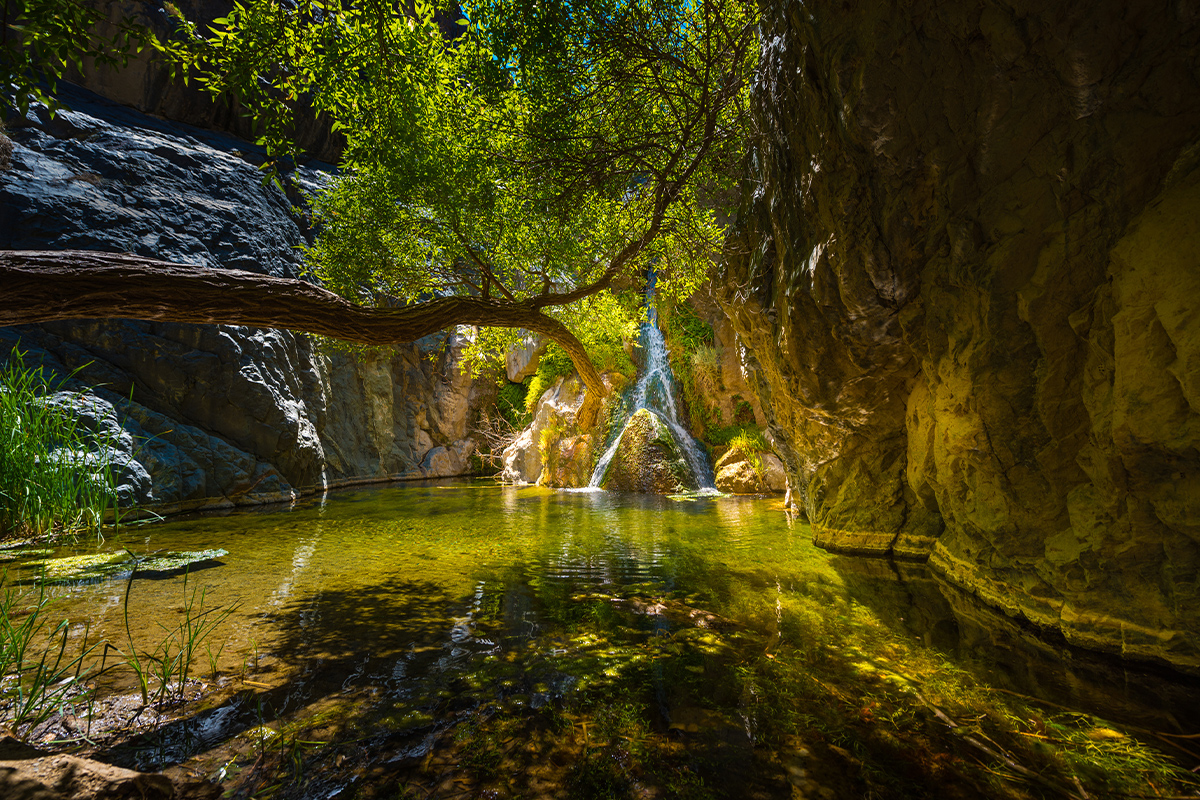
Mosaic Canyon
Another must-do when visiting Death Valley National Park is hiking the Mosaic Canyon trail. This is a 4-mile (out and back) trail through rough rock walls and smooth, water-polished marble. Its dead end, a dry waterfall, is a blast and leaves you imagining how it looked millions of years ago when water rushed over.
The Mosaic Canyon is located a quarter mile west of Stovepipe Wells Village. The dirt road leading to the trailhead parking lot is about 2.3 miles long and is accessible by most passenger cars. Be sure to come early or late in the day to beat the crowds and the heat.
Mustard Canyon
Mustard Canyon gets its name from its low-lying, yellow-colored hills. This canyon is located roughly two miles north of the Furnace Creek visitor center near Harmony Borax Works. Its colorful hills offer numerous photo ops, but be sure to avoid blocking traffic behind you as this is a one-way dirt road.
The best time for scenic driving, mountain biking, or hiking the Mustard Canyon is when the weather is cool.
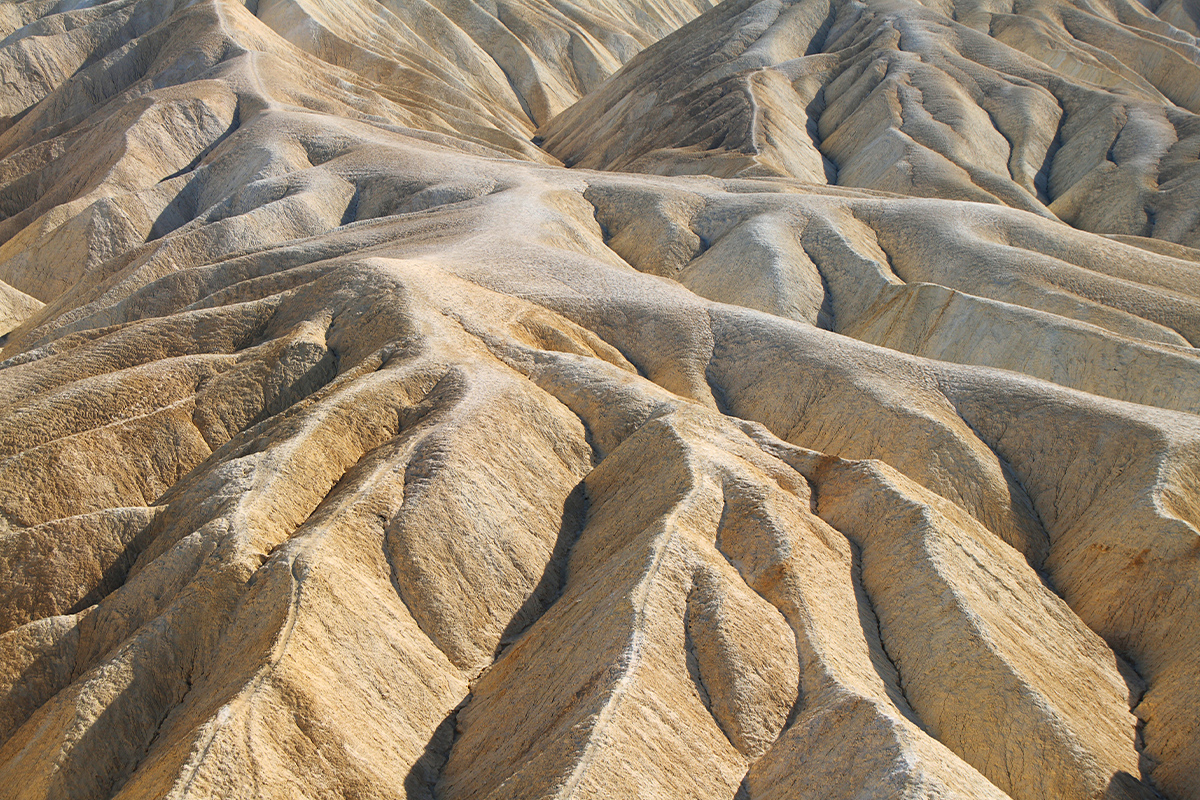
Golden Canyon
The Golden Canyon will particularly impress hikers wondering what to do in Death Valley National Park. Most people consider this the best hiking trail in Death Valley because there are many ways to approach it. If you love hiking trails with a surprise ending, we recommend doing the 1.25-mile hike to the Red Cathedral. Another option is to make a full loop that combines Golden Canyon, Gower Gulch, and Zabriskie Point.
Golden Canyon is located three miles south of Furnace Creek on Badwater Road. The Golden Canyon parking area is to the east (left) of Badwater Road and can accommodate buses and RVs. Hike Golden Canyon early in the morning or late afternoon to enjoy some shade from the walls.
Marble Canyon
Marble Canyon is part of a strenuous 26-mile loop that includes Cottonwood and Titus canyons. This is a very exciting hiking trail among backpackers thanks to its colors, towering walls, dramatic canyons, and petroglyphs that combine for a satisfying sensory experience.
Marble Canyon is located 3.5 hours northwest of Las Vegas and west of Stovepipe Wells General Store. As with other trails in Death Valley, you should plan to hike the Marble Canyon between fall and spring, particularly early or late in the day.
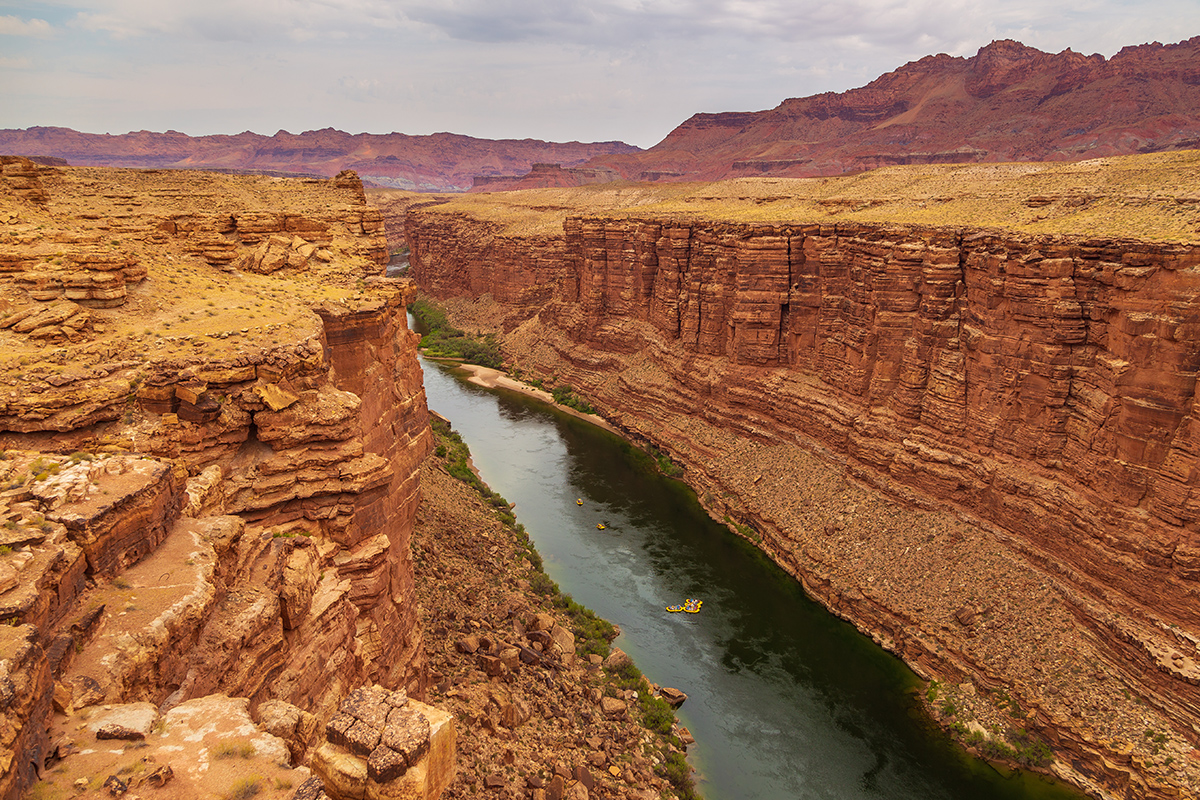
Mesquite Flat Sand Dunes
If climbing dunes is at the top of your Death Valley National Park things-to-do list, we recommend Mesquite. These dunes are the easiest to access in Death Valley National Park, so it’s not surprising that they are the most crowded. The crescent, linear, and star-shaped dunes of Mesquite make for good photography. And remember to bring your sandboard. It’s permitted here.
Mesquite Flats is located 22 miles northwest of Furnace Creek along Highway 190. The car park for the dunes is to the right, roughly two miles before Stovepipe Wells. There are photo ops galore, but arrive early (before sunrise) when the sand is still cool, and the crowds from Stovepipe Wells campgrounds are still thin.
Eureka Dunes
Eureka Dunes literally and figuratively stands above all the five dunes of Death Valley National Park. Peaking at 680 feet above the dry lakebed, these are the tallest dunes in California and the second tallest in North America. But what really makes them unique is their singing sand during sand avalanches. Even better, you can camp at the base of these dunes for the best sunrise and sunset views.
Eureka Dunes is located near the Last Chance Mountains in the remote northern part of Death Valley National Park. The best time to visit these dunes is early morning and before dusk.
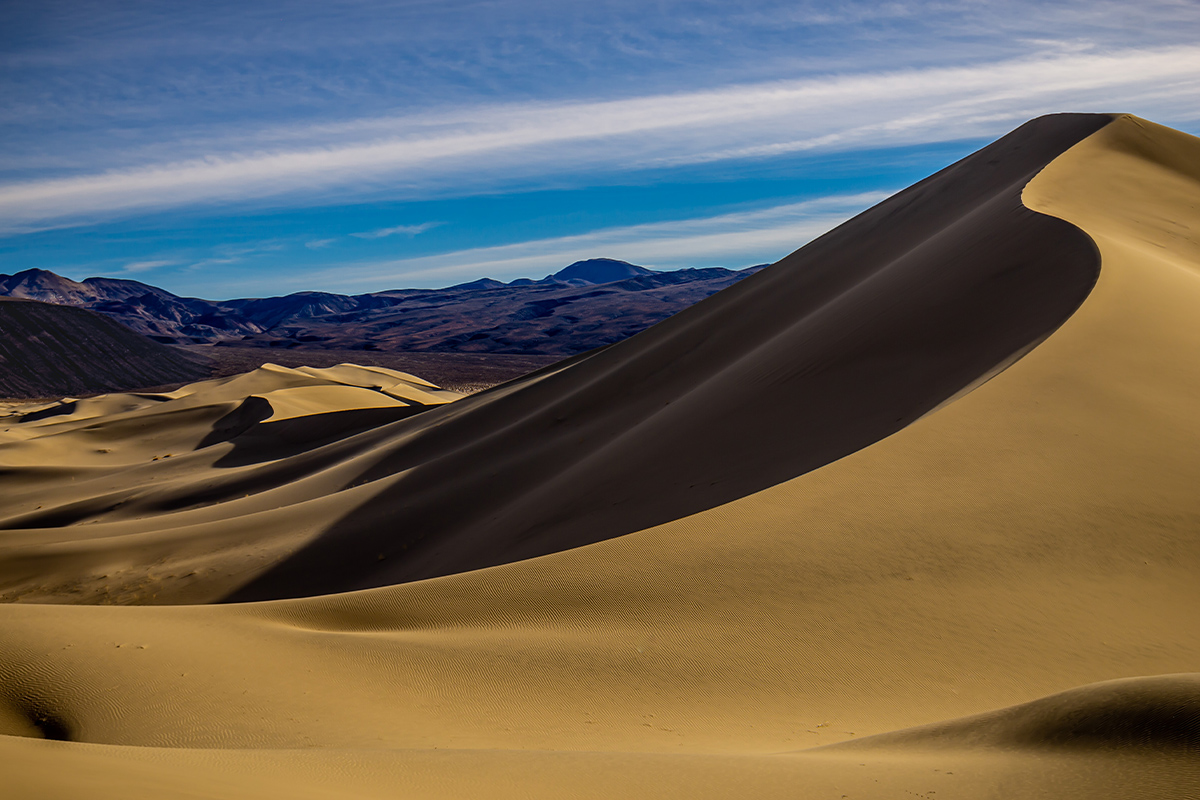
Telescope Peak
Hiking the Telescope Peak is one of the best things to do in Death Valley National Park if you seek serious bragging rights. Towering a dizzying 11,331 feet above Badwater Basin (the lowest point in the National Park), this hike is not for the faint-hearted. But it rewards you with some of the most dramatic views you can get within Death Valley National Park.
The Telescope Peak is located on the western side of Death Valley National Park. The trailhead starts at Mahogany Flat Campground. It’s best hiked between late spring and early fall.
Furnace Creek
Furnace Creek is where you want to be after several days of exploring one of the hottest National Parks in the US. This resort, dating back to 1927, shouldn’t be missed if you don’t know what to see in Death Valley, more so if you have never seen an oasis. It’s a true oasis with beautiful palm groves, oasis gardens, a spring-fed swimming pool, and even an ice cream parlor!
Furnace Creek is located about four hours from Los Angeles, and it’s a good start-off point to other Death Valley places to see.
Salt Creek Interpretive Trail
Salt Creek Interpretive Trail is an easy half-mile loop over a bonafide salt marsh. The entire trail sits on a raised boardwalk designed to be stroller and wheelchair-accessible. This makes it one of the best things to do in Death Valley as a family with kids.
Salt Creek Interpretive Trail is located 13 miles north of Furnace Creek to the left of Highway 190. The best time to visit it is spring when the Salt Creek pupfish are spawning.
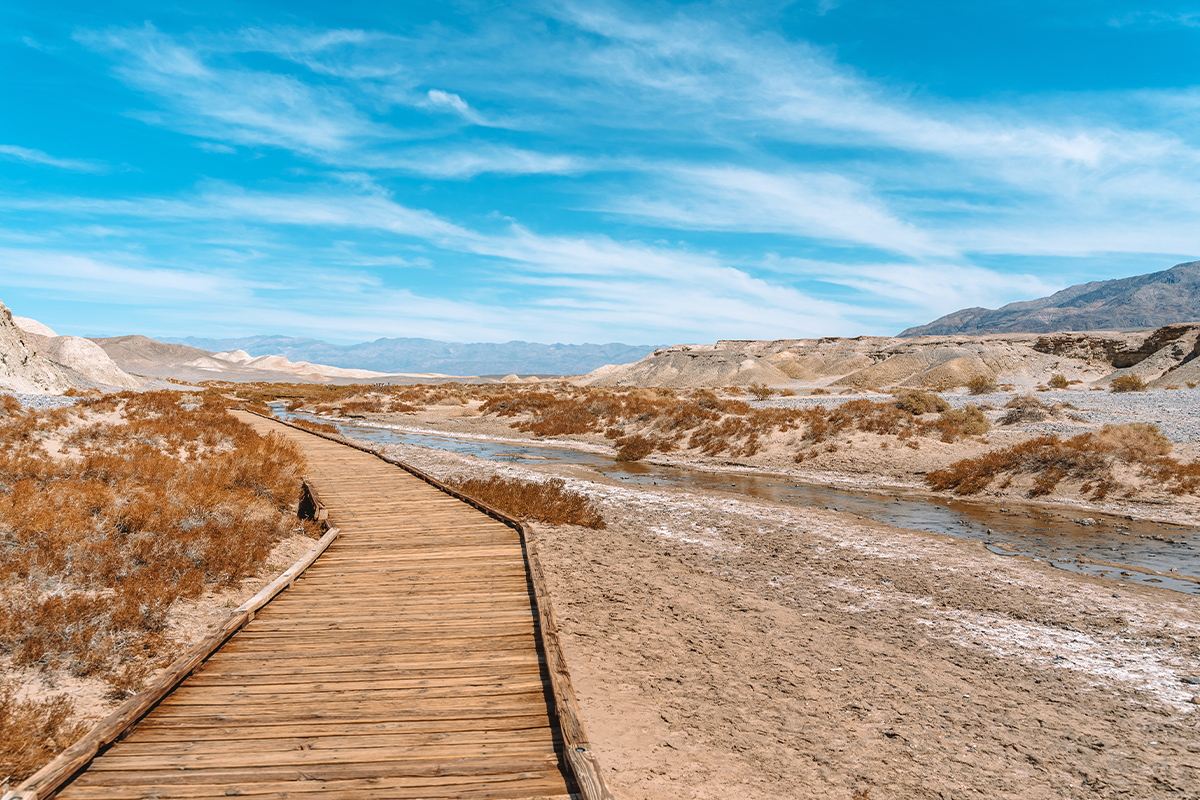
Surprise Canyon Hike
The major reason the Surprise Canyon hike is popular is because it leads to Panamint City. This 1874 ghost town was founded by some of the most dangerous gunslingers in American history. Interestingly, the bandits would later give up their life of crime after hitting the “silvermine.” This 12.6-mile hike out and back is considered strenuous.
Tips for Visiting Death Valley
Here are tips to help you make the most out of your Death Valley National Park trip and avoid making costly mistakes:
- Bring a real map and ensure you know how to use it. This is one of the remotest parts of California, with limited GPS service and nearly zero cell phone service.
- Gas inside the park costs $9 per gallon! Ensure you fill up at the nearest station before entering Death Valley.
- Bring plenty of water (at least one gallon per person daily).
- There's no public transport inside Death Valley. You must bring your car, rent one, or book a tour.
- Although most dirt roads are suitable for standard cars, accessing some Death Valley activities and attractions requires a 4WD with high clearance.
- Get someone else to drive. Otherwise, you'll lose a lot by having to concentrate on the road.
- The risk of flash floods is extremely high in Death Valley National Park. It's advisable not to enter any canyon when it's raining anywhere else within the park.
- Importantly, do not skimp on your first aid checklist. It may be long before you’re rescued when stranded in Death Valley.
What to Wear When Visiting Death Valley
Knowing what to wear when visiting Death Valley National Park is the first step towards a fulfilling experience. Although most days are sweltering (even in winter), some nights can get chilly. So, it's best to pack with both weather extremes in mind.
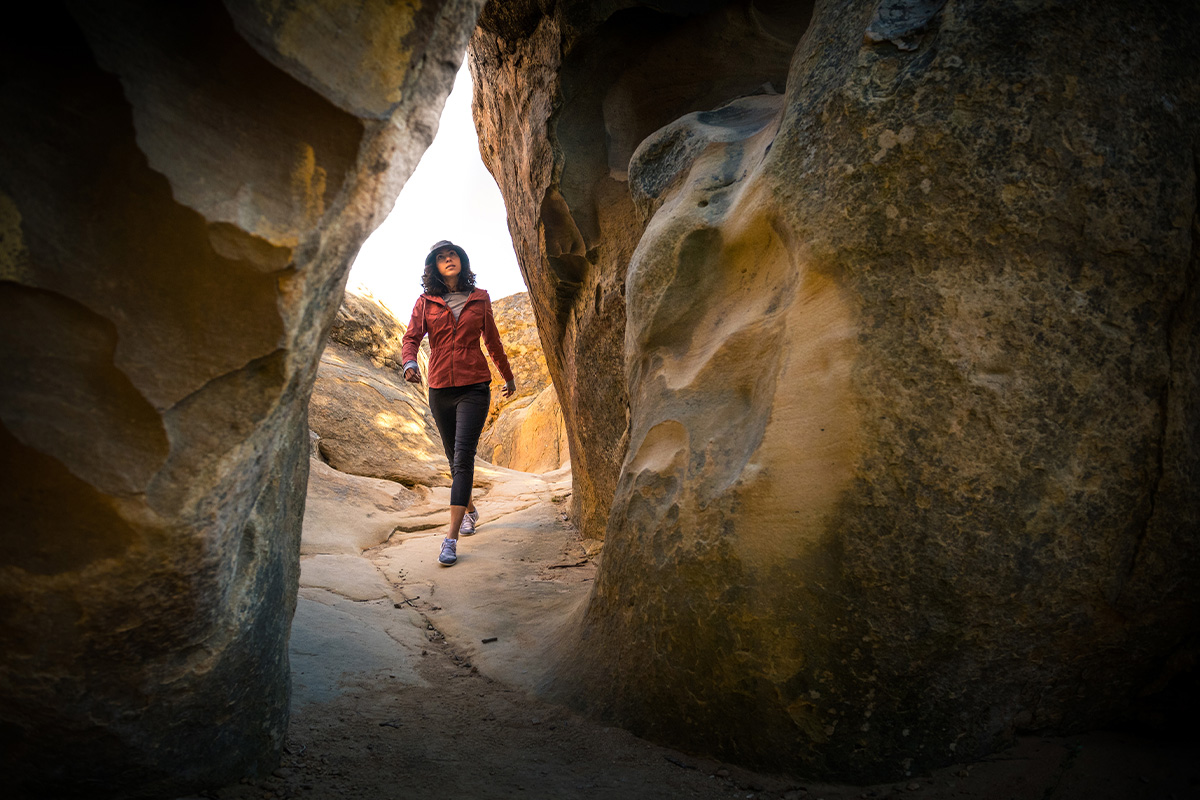
Here's an overview of what to wear in Death Valley National Park:
- Hiking pants- Ensure they are lightweight, breathable, and ergonomic to allow you to move freely. KÜHL’s Clothing is a good place to start searching for the best women's hiking clothing and men's outdoor wear if you want a mix of comfort and durability.
- Sweatshirt- to keep you warm and comfortable when the temperature dips.
- Lightweight and breathable jacket to keep you warm at night.
- Hiking socks to keep your feet dry, comfortable, and well-supported during long hikes.
- Sun hat to protect your brain from cooking.
- A lightweight and quick-drying towel to wipe away sweat during your explorations.
- Quality sunglasses for eye protection.
Final Thoughts
Death Valley may be the home of extremes. But there's no denying that it is truly majestic and a must-see when visiting California. If its name alone does not inspire a sense of wonder, we bet its unique, diverse, and, sometimes, other-worldly features will. You should definitely plan a trip here if you itch for something edgier.
Artists Palette mountain range by: Carter Baran.
FAQs
What is the best point in Death Valley?
The battle for the best spot in Death Valley is a tight contest between Zabriskie Point, Mesquite Flat Sand Dunes, The Race Track, Badwater Basin, and Artist's Palette.
When should you avoid Death Valley?
Visiting Death Valley National Park in summer, particularly in July, is not advisable unless you are adequately prepared for the intense heat.
Why is Death Valley so expensive?
Death Valley National Park is expensive because of its remote location, making it challenging to assess and maintain.
Are there animals in Death Valley?
The seemingly barren landscape of Death Valley National Park is home to over 400 animal species, including mountain lions, coyotes, mule deer, Death Valley pupfish, and desert bighorn sheep.
Why is it called Death Valley?
Death Valley got its name from a group of unlucky gold prospectors who got lost in this valley in the winter of 1849. When they were saved (one soul was lost, though), someone proclaimed, "Goodbye, Death Valley," and the moniker stuck.
Is the water drinkable in Death Valley?
The water supplied to the accommodation facilities in Death Valley National Park is disinfected with chlorine and monitored for safety. That said, drinking water directly from natural sources, including waterfalls, springs, and ponds, is not advisable.


